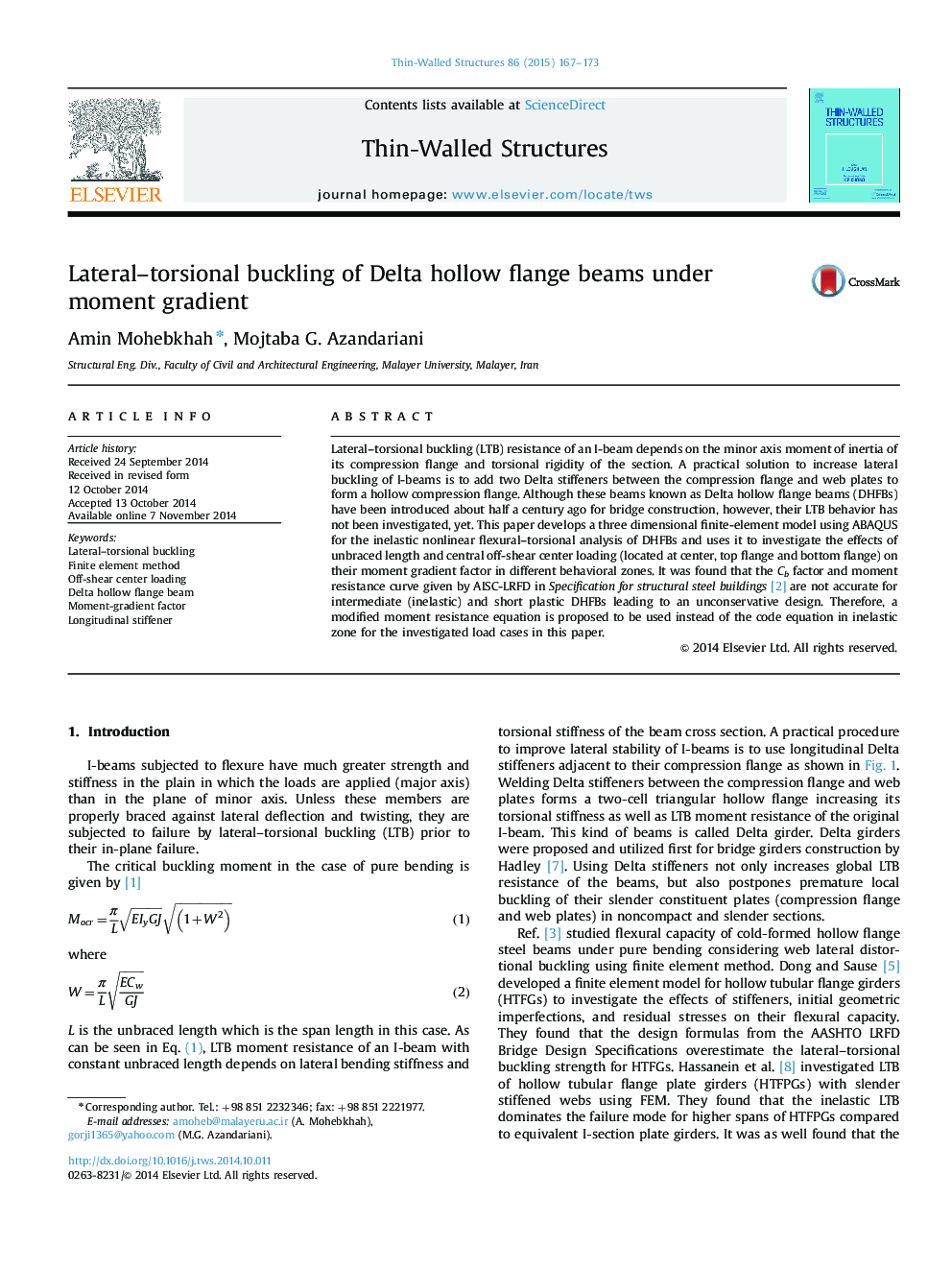| Article ID | Journal | Published Year | Pages | File Type |
|---|---|---|---|---|
| 308765 | Thin-Walled Structures | 2015 | 7 Pages |
•The moment-gradient factor and moment resistance curve given by AISC-LRFD are just valid for long-span DHFBs (i.e. elastic beams).•A modified moment-gradient factor was proposed for DHFBs as a function of unbraced length.•The AISC moment capacity curve is unconservative for DHFBs.
Lateral–torsional buckling (LTB) resistance of an I-beam depends on the minor axis moment of inertia of its compression flange and torsional rigidity of the section. A practical solution to increase lateral buckling of I-beams is to add two Delta stiffeners between the compression flange and web plates to form a hollow compression flange. Although these beams known as Delta hollow flange beams (DHFBs) have been introduced about half a century ago for bridge construction, however, their LTB behavior has not been investigated, yet. This paper develops a three dimensional finite-element model using ABAQUS for the inelastic nonlinear flexural–torsional analysis of DHFBs and uses it to investigate the effects of unbraced length and central off-shear center loading (located at center, top flange and bottom flange) on their moment gradient factor in different behavioral zones. It was found that the Cb factor and moment resistance curve given by AISC-LRFD in Specification for structural steel buildings [2] are not accurate for intermediate (inelastic) and short plastic DHFBs leading to an unconservative design. Therefore, a modified moment resistance equation is proposed to be used instead of the code equation in inelastic zone for the investigated load cases in this paper.
